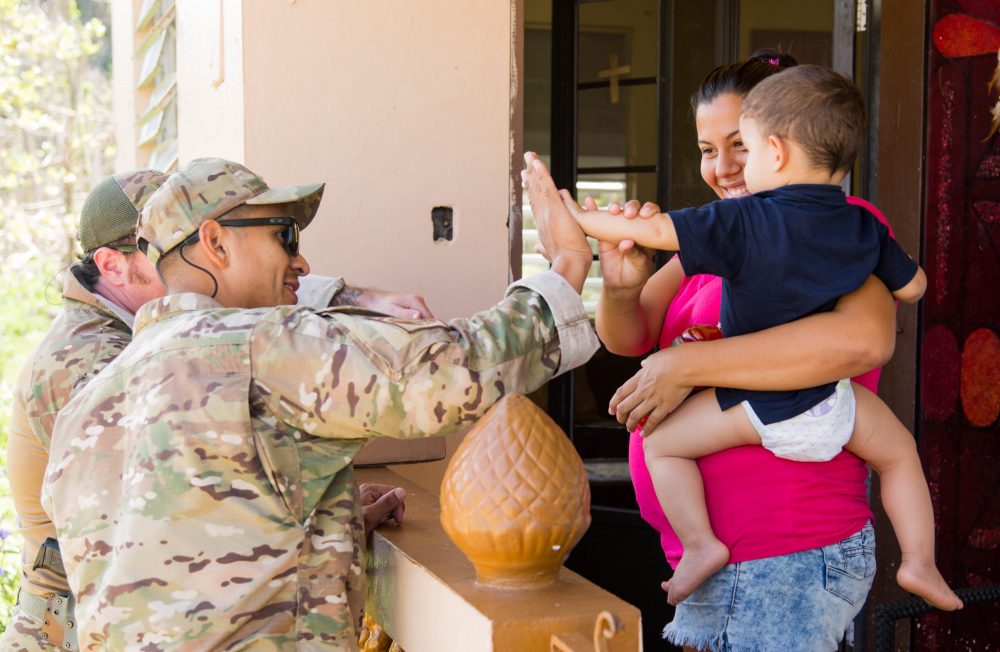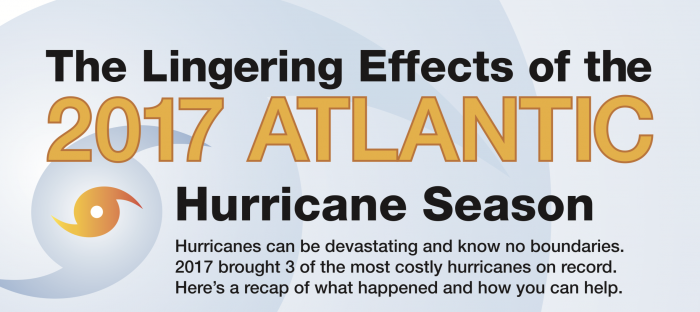12 CDP Grants Support Recovery in Puerto Rico and the Virgin Islands
It is with a whoop of joy that I am writing yet another grant announcement blog! The Center for Disaster Philanthropy (CDP) board of directors met early in September and, at the recommendation of the grant committee, awarded twelve grants out of the CDP 2017 Atlantic Hurricane Season Fund (Fund). The Fund was launched following […]

It is with a whoop of joy that I am writing yet another grant announcement blog! The Center for Disaster Philanthropy (CDP) board of directors met early in September and, at the recommendation of the grant committee, awarded twelve grants out of the CDP 2017 Atlantic Hurricane Season Fund (Fund).
The Fund was launched following Hurricane Maria to allow funders to come together and meet the long-term recovery needs of communities in the Caribbean affected by Hurricanes Maria and Irma. Approximately $3.4 million was donated to the Fund.
The stated purpose of the Fund is to support medium and long-term needs, especially for programs that support minority and vulnerable populations; fill in gaps where public resources are unavailable or scarce; and promote and facilitate collaborative relationships among funders and responding organizations.
The grant committee determined that funding will focus on the areas of 1) food security, 2) health and mental health needs of older adults, and 3) livelihoods and economic recovery for communities affected by Hurricanes Maria and Irma in Puerto Rico, U.S. Virgin Islands and British Virgin Islands. Applicants were asked to demonstrate how projects supported these criteria and further show resiliency, innovation and cross-sector support of vulnerable populations.
At the recommendation of the grant committee, the CDP board of directors awarded the following grants, totaling $2.9 million:
- Americares was awarded $500,000 to accomplish three goal: 1) provide training, support services and skills to reduce stress, improve coping and reduce burnout among 5,250 post-disaster care providers recovering from Hurricane Maria; 2) determine the level to which various levels of support interventions reduce stress, improve coping and reduce burnout;. 3) train 2,750 care providers to integrate psychosocial programming into emergency and safety net sector primary care.
- ASPIRA received $300,000 to address food security via three work objectives. They will work to increase the amount of locally grown food, support economic development through tourism activities, and develop agriculture and hospitality industry skills in youth ages 12 to 18.
- Barefoot College was awarded $250,000 to provide communities with stable and sustainable electricity so they can manage self-sufficiently. This effort will benefit the Fund focus areas related to food security and health and mental health resources with agricultural improvements, internet access, and increased communication with the outside world.
- Centro de Servicios Primarios de Salud de Patillas Inc. received $50,000 to develop an educational program for elderly populations with emphasis on securing food, potable water, food storage, food labels, nutritional and health, and other food security issues in times of disaster.
- NetHope received a grant in the amount of $303,600 to accomplish three goals: First, they will 1) ensure that nongovernmental organizations (NGOs) and community organizations have necessary connectivity; 2) build an information management system that will enable local community organizations and NGOs to share indicators and data sets; 3) enable citizen correspondents to aggregate stories around the response.
- The Puerto Rico Agricultural Extension Service (PRAES) was awarded $300,000 to support food security and food preservation, provide mitigation education, and increase farming biodiversity across all five regions of Puerto Rico.
- Mentes Puertorriquenas en Accion (Mentes)/DMPA Corp received $10,000 to support #EnAccion a civic engagement program in which citizens contribute to community projects through volunteering activities, pro-bono work and internships. This project will work in the Toa Baja community with 150 residents to foster community outreach, food security and livelihoods.
- PathStone Enterprise Center, Inc. received an award totaling $140,000 to provide direct sub-grants to at least thirteen small businesses and provide technical assistance to at least thirty small businesses to support resiliency and general business administration. PathStone wishes to expand its current donation fund and technical assistance program.
- Puerto Rico Community Foundation received $200,000 to support economic activity and job generation by working closely with economic development community-based organizations that work with individuals in their communities to provide new competencies and skills that facilitate job creation and long-term self-sustainable projects. This will be accomplished through community business incubators and technical assistance efforts.
- The Puerto Rico Conservation Trust was awarded $35,000 to outfit one community center with solar panels for renewable energy and water catchment and filtration system by June 2019, and to train key community members to ensure the installed equipment will receive the required maintenance. The overarching goal of this work is to have sustainable community centers that serve as symbols of self-sufficiency, hope and innovation.
- The Solar Foundation received $500,000 for the Rio Piedras Market Solar Jobs Training Project. Goals of this effort are three-fold: 1) increase food and energy security for the Plaza del Mercado in the Rio Piedras neighborhood of San Juan; 2) build workforce capacity for the local solar industry; and 3) measure improvements to the livelihoods and economic recovery of project beneficiaries.
- The St. Thomas Recovery Team via Lutheran Social Services received $300,000 to continue to coordinate St. Thomas’ long-term recovery response, resource management, resilience planning, and training in response to Hurricanes Irma and Maria. As part of this project, they will: promote urban gardening and local food production, identify food desert hot spots, and ensure the continued viability of local indigenous fruits and vegetables for future generations.
More like this

Announcing Six New Recovery Grants for the Caribbean and Florida

